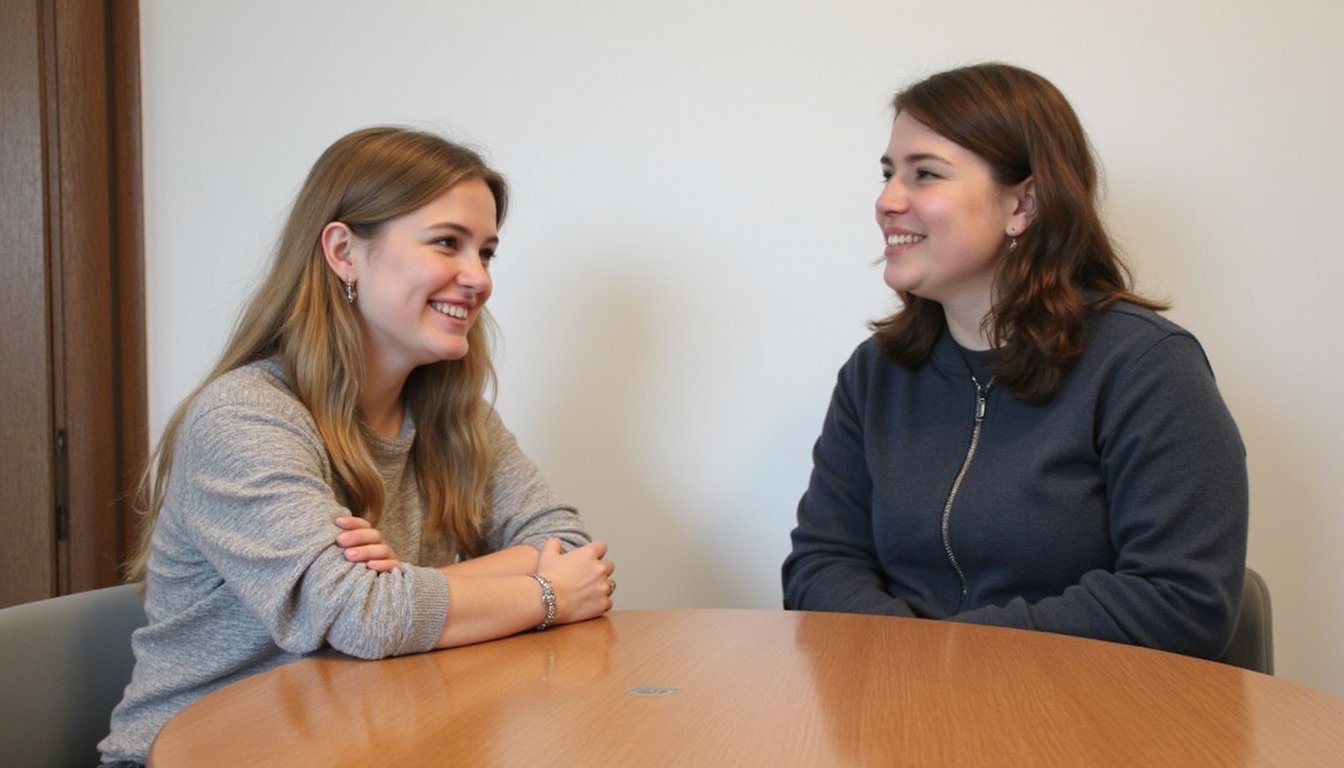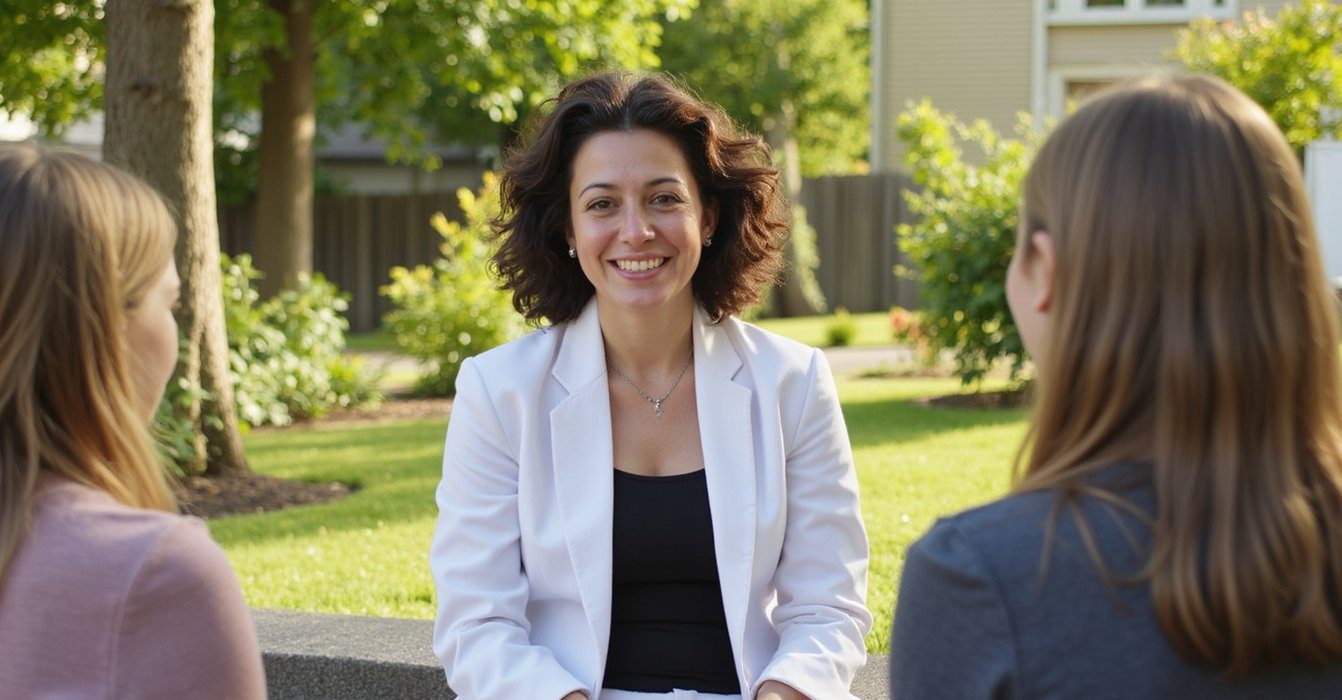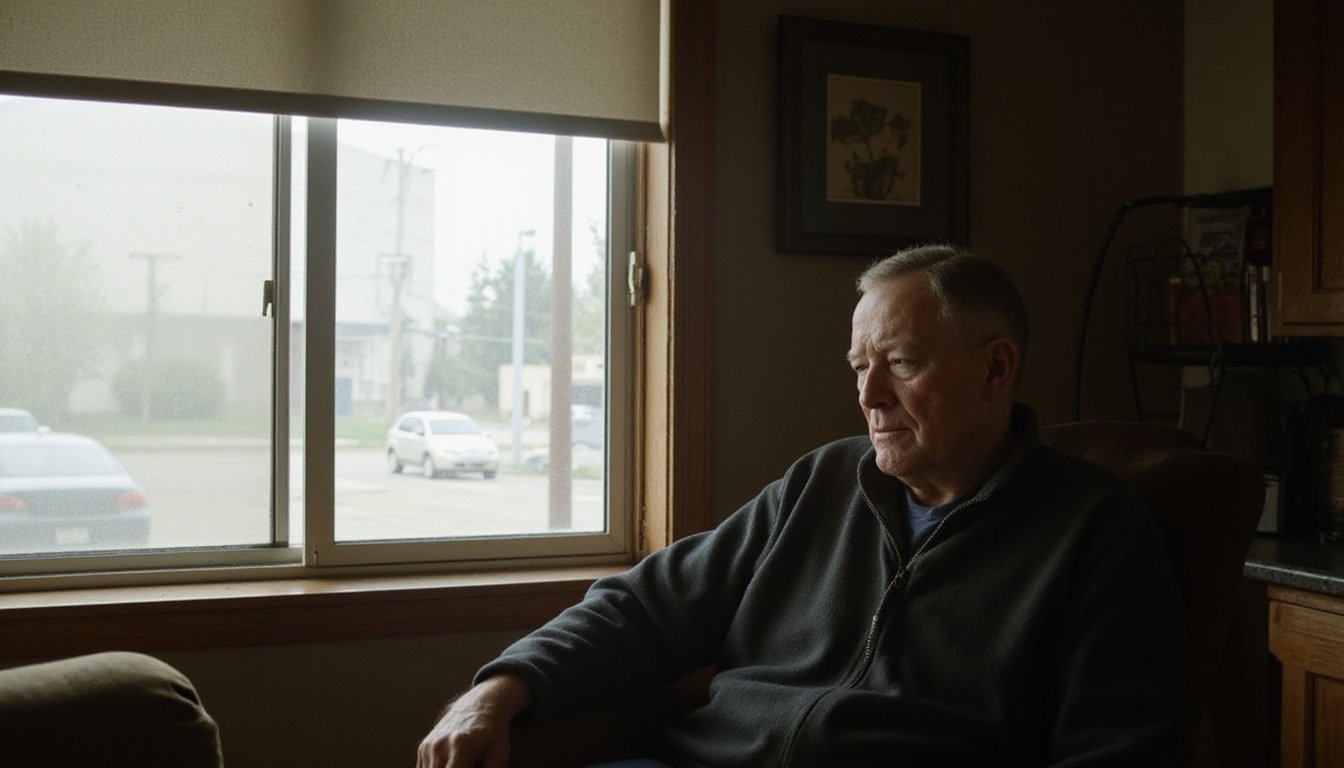Social Recovery Therapy (SRT) shows partial effectiveness, but you shouldn’t expect miracle results. Clinical trials reveal that less than 50% of participants achieve complete social recovery, while only 15% maintain long-term remission. You’ll find some benefits in structured activity levels and employment outcomes, with participants gaining an average of 11 hours of weekly structured activity. However, SRT performs similarly to enhanced standard care, and its cost-effectiveness remains debatable. The complete picture offers important insights for making informed treatment decisions.
Understanding the Evidence Behind SRT

Research into Social Recovery Therapy (SRT) reveals a mixed pattern of effectiveness across different outcome measures. You’ll find the most substantial evidence in structured activity improvements, where participants achieved an average 11-hour weekly increase. The SRT mechanisms work primarily through enhancing positive self-beliefs to drive engagement. Clinical trials show that less than 15% achieve sustained recovery in both symptomatic and social domains.
Young people typically spend fewer than 30 hours per week in structured activities. Long-term data shows employment-related gains can persist up to two years post-intervention, though less than 50% achieve complete social recovery.
While participant demographics experiencing psychosis showed initial increases in structured activity, these weren’t maintained beyond 24 months. Mental health outcomes present a nuanced picture there’s a 50% reduction in depression and social phobia, but psychosis symptoms didn’t remarkably improve. The PRODIGY trial with 270 participants demonstrated promising results for complex mental health issues.
Cost-effectiveness analyses support SRT’s value as an adjunct to standard care, particularly for employment-related outcomes.
Major Clinical Trial Results
Clinical trials evaluating Social Recovery Therapy (SRT) reveal no significant advantages over enhanced standard care, with both groups showing similar 11-hour increases in structured activity.
You’ll find the treatment effects remained consistent across 9, 15, and 24-month durations, despite SRT participants receiving substantially more support hours (75.3h vs. 11.3h).
Recovery patterns proved heterogeneous across both interventions, with less than 50% of participants achieving social recovery and fewer than 15% maintaining long-term remission. The study focused on implementing targeted psychological interventions to improve treatment outcomes.
The research was conducted at three UK centers with participants aged 16-25 years experiencing severe mental health issues.
Trial Size Comparisons
While many psychological intervention trials struggle with small sample sizes, this major evaluation of Social Recovery Therapy (SRT) included 270 participants randomized equally between SRT plus enhanced standard care (ESC) and ESC alone.
The trial methodology demonstrated robust data retention, with 87% of participants completing the primary outcome assessments at 15 months. You’ll find this sample size particularly meaningful when considering that 235 participants were included in the intention-to-treat analysis.
The study’s scale allowed for reliable statistical comparisons between treatment arms, though participant demographics aren’t specified in the available data.
This trial size also enabled researchers to conduct meaningful secondary analyses of mental health outcomes and maintain statistical power through the 24-month follow-up period, strengthening the validity of their findings about SRT’s effectiveness.
Treatment Duration Effects
The extensive Social Recovery Therapy trial data revealed significant treatment duration parameters, with participants receiving an average of 16.77 sessions over 9 months in the PRODIGY trial. Treatment adherence varied, with 66% achieving full dose completion, impacting therapeutic consistency and engagement levels. The integration of cognitive remediation training during the first 7 weeks provided essential groundwork for subsequent therapy phases. Paid employment gains remained superior in the treatment group, with 25% securing work compared to zero in controls. Early therapeutic intervention showed promising results, with structured activities helping prevent long-term social disability.
Key findings on time efficacy and long-term effects include:
- Session variability ranged from 0-33 meetings, with dose impact directly influencing activity sustainability.
- Structured support through multidisciplinary services enhanced outcomes, with 32-40% accessing youth and educational resources.
- Service access patterns showed SRT participants utilized more employment support (75.3 vs 11.3 hours).
- Treatment effects remained stable at 15-month primary outcome measures, with benefits extending to 24-month follow-up.
These duration parameters demonstrate SRT’s effectiveness when delivered with appropriate engagement and support intensity.
Recovery Rate Variations
Building on established treatment duration findings, major clinical trial results revealed unexpected outcomes in recovery rates between Social Recovery Therapy (SRT) and Enhanced Standard Care (ESC).
You’ll find that both interventions demonstrated similar efficacy, with participants showing an 11-hour average increase in structured activity regardless of treatment type. The data indicates no significant differences in recovery rates between SRT and ESC at 15 or 24-month follow-ups.
While SRT participants received substantially more employment support (75.3 hours versus 11.3 hours), this didn’t translate to improved clinical outcomes.
Recovery rates remained below 50% in both groups, suggesting that neither intervention definitively outperformed the other. The findings challenge earlier assumptions about SRT’s superiority, as both treatment approaches yielded comparable improvements in social functioning and symptom reduction.
Impact on Structured Activities
Research examining Social Recovery Therapy‘s impact on structured activities revealed mixed results across participant groups. While both SRT and enhanced standard care participants showed significant improvements in structured activity levels, SRT didn’t demonstrate superior effectiveness compared to standard care alone.
Key findings on therapy effectiveness include:
- Participants averaged an 11-hour weekly increase in structured activities
- Both groups progressed from less than 30 hours/week at baseline
- 87% of participants provided complete follow-up data
- Mental health improvements correlated with increased activity levels
The evidence suggests that while structured activities play a central role in recovery, SRT may not be necessary to achieve these gains. The therapy primarily targets young adults experiencing early stages of psychosis who need support with social functioning and engagement. When implemented effectively, the therapy emphasizes cognitive-behavioral methods to help participants set and achieve personal goals.
Enhanced standard care alone appears equally effective at increasing activity levels and supporting mental health improvements through structured engagement.
Employment and Long-Term Benefits

Social Recovery Therapy markedly enhances your employment prospects, with participants maintaining stable jobs and experiencing fewer workplace disciplinary issues for up to two years after completing the intervention.
You’ll likely see improvements in work attendance and job performance evaluations, contributing to reduced healthcare costs and increased financial stability over time. Employees in recovery programs demonstrate exceptional reliability, missing 5 fewer days of work annually compared to other workers. Supportive workplace policies have been shown to enhance both individual and organizational wellness outcomes.
Through structured workplace integration and skill development programs, you can expect sustained gains in both employment status and overall activity levels, which reinforce long-term recovery outcomes.
Sustained Employment Gains
Compelling evidence from long-term studies demonstrates that Social Recovery Therapy (SRT) produces lasting employment benefits for individuals with early psychosis. The therapy’s effectiveness in promoting sustained recovery is evident through consistent improvements in social integration and employment outcomes. Similar to how Individual Placement and Support has revolutionized employment support in the Netherlands, SRT offers comprehensive assistance for those seeking competitive work. Research indicates that competitive employment enhances overall recovery outcomes and life satisfaction. Policy makers strongly support making these services more widely accessible to those in need.
Key findings on therapy effectiveness include:
- Treatment groups achieved 25% employment rates compared to 0% in control groups.
- Employment gains remained stable at 15-month follow-up assessments.
- Participants maintained hope levels with sustained BHS improvements.
- No symptom exacerbation occurred during the recovery process.
SRT addresses employment barriers through targeted cognitive-behavioral strategies, helping individuals develop essential coping strategies for workplace challenges.
This structured approach supports lasting social integration while preventing burnout, making it particularly valuable for those with complex social disabilities in early psychosis.
Activity Level Improvements
Building on the documented employment gains, extensive data reveals profound activity level improvements that extend far beyond the workplace.
You’ll find that sustained employment through Social Recovery Therapy greatly enhances activity engagement across multiple life domains. Research shows that structured work environments provide essential daily routines that foster recovery stability and increased social interaction.
The benefits manifest through improved community integration and reduced isolation, as you develop meaningful connections with coworkers and engage in purposeful tasks.
These activity level improvements correlate with better quality of life outcomes and enhanced self-respect. Your participation in interdependent workplace tasks strengthens social support networks while providing opportunities for skill development.
The structured environment reduces idle time associated with relapse risks, while regular social interaction reinforces your recovery journey through positive peer relationships.
Mental Health Outcomes and Recovery
Research examining the mental health impacts of Social Recovery Therapy (SRT) has yielded mixed but promising results across multiple trials. Studies have demonstrated significant mental health improvements and recovery strategies that support long-term wellness.
Social Recovery Therapy shows encouraging potential, demonstrating measurable mental health benefits and sustainable recovery approaches through ongoing clinical research.
Key findings include:
- A 50% reduction in diagnosable depression and social phobia among intervention participants.
- 25% of SRT participants secured paid employment post-therapy, while control groups showed 0% employment.
- Sustained hopeful outlooks were maintained for up to 15 months after therapy completion.
- Mental health symptoms remained stable during treatment, with no observed worsening.
While SRT combined with Enhanced Standard Care didn’t show superiority over standard care alone, both approaches achieved substantial symptom improvements.
The therapy’s impact on employment outcomes suggests its potential for supporting functional recovery, though less than 15% achieve lasting outcomes in non-affective psychosis cases.
Cost Analysis and Healthcare Value

When you compare Social Recovery Therapy (SRT) to standard care, the data shows significant cost advantages, with digital interventions like Horyzons saving over AU$4,700 per participant in healthcare costs.
The total intervention costs were significantly lower in the Horyzons group from both healthcare sector and societal perspectives compared to treatment as usual.
The long-term economic benefits extend beyond direct healthcare savings, as evidenced by PRSS demonstrating strong value at US$5,898.60 per QALY and potential budget impacts ranging from cost-neutral to substantial savings of up to €190 million.
You’ll find that SRT optimizes healthcare resource utilization by reducing reliance on expensive inpatient services and supported housing, while digital platforms further enhance cost-effectiveness through scalable delivery methods.
Intervention Vs Standard Care
Although Social Recovery Therapy (SRT) combined with enhanced standard care (ESC) demonstrated improvements in structured activity hours, the cost-effectiveness analysis revealed no clear economic advantage over ESC alone.
When comparing these interventions, you’ll find several key distinctions in their effectiveness and patient outcomes:
- SRT shows superior results in increasing social engagement through structured activities, measured by the Time Use Survey at 15 months.
- Patient retention rates favor SRT, with stronger therapeutic relationships and lower dropout rates compared to ESC alone.
- Both interventions show similar impacts on attenuated psychotic symptoms and emotional disturbance, with no significant differences.
- Quality-adjusted life years (QALYs) measurements indicate comparable cost-effectiveness between the two approaches, despite SRT’s additional resource requirements.
This evidence suggests that while SRT offers specific benefits in social recovery, its overall healthcare value remains comparable to standard care.
Long-Term Economic Benefits
The long-term economic analysis of Social Recovery Therapy reveals a complex cost-benefit landscape that extends beyond initial implementation expenses.
You’ll find that SRT’s cost effectiveness remains questionable, with intervention costs considerably higher than enhanced standard care at £3,268.94 per participant. The combined SRT-ESC approach costs £5,927.73, yet shows no substantial outcome improvements.
Economic modeling indicates that QALY gains don’t justify the additional expenses, with costs ranging from £2,708.32 to £5,112.86 outweighing benefits.
While you’ll notice participants prefer SRT and show better retention rates, this hasn’t translated into long-term healthcare savings.
The therapy’s financial sustainability remains challenging, as current economic models need adjustment to accurately reflect real-world implementation costs and potential societal benefits.
Healthcare Resource Utilization
By examining service utilization patterns across both treatment arms, data reveals complex resource allocation dynamics in Social Recovery Therapy implementation.
You’ll find that SRT demonstrates strategic healthcare resource distribution through:
- Maintained primary care engagement with 72% of SRT participants keeping GP connections versus 66% in ESC
- Reduced specialist dependency showing 5.3% lower psychiatrist consultation rates in SRT
- Consistent care coordinator access between groups (38-39% utilization)
- Enhanced community resource integration prioritizing structured activities over clinical interventions
The service utilization data suggests SRT effectively balances healthcare resource allocation while maintaining essential support systems.
Though measurement challenges exist in tracking nonmedical resources and out-of-pocket expenses, the evidence indicates SRT participants access appropriate levels of care while reducing reliance on specialist services.
Patient Experiences and Feedback
Patients undergoing Social Recovery Therapy report markedly higher satisfaction levels compared to those receiving enhanced standard care, citing the structured approach and extensive social reintegration focus as key benefits.
Patient testimonials consistently highlight the therapy’s effectiveness in addressing social isolation through gradual, supported reintegration activities.
Social Recovery Therapy proves effective by methodically guiding patients from isolation back into meaningful social connections through carefully paced, supported activities.
You’ll find that strong therapeutic relationships emerge as an essential factor in treatment success, with participants emphasizing how therapist guidance helps them overcome communication barriers and historical withdrawal patterns.
The presence of Resource Groups provides additional emotional validation, strengthening patients’ sense of belonging and self-worth.
While patients acknowledge SRT as challenging, they value its practical application in developing social skills and rebuilding connections.
Treatment feedback indicates that SRT’s balanced approach of support and structured intervention exceeds expectations for fostering meaningful social engagement.
Research Quality Assessment
While research into Social Recovery Therapy demonstrates promising theoretical foundations, several methodological factors warrant careful evaluation when assessing study quality. The evidence reliability stems from a mixed-methods approach incorporating both quantitative and qualitative data collection.
- Research methodology emphasizes standardized assessment tools and functional recovery markers, providing objective measurements of therapeutic outcomes.
- Studies utilize mixed-methods designs that combine behavioral metrics with participatory qualitative insights.
- Cost-effectiveness analyses strengthen the evidence base by evaluating economic impacts alongside clinical outcomes.
- Quality assessment benefits from structured goal-based evaluation frameworks that track individualized recovery objectives.
However, you’ll need to reflect that most studies focus primarily on non-affective psychosis, potentially limiting generalizability across other conditions.
The emerging RCT evidence suggests promising results but requires further validation through larger-scale trials.
Comparing SRT to Standard Care
Despite the theoretical promise of Social Recovery Therapy, extensive trial data comparing SRT with enhanced standard care (ESC) revealed no significant therapeutic advantages.
When examining therapy effectiveness, both groups showed similar outcomes, with structured activity hours remaining below 30 hours per week (14.5 for SRT+ESC vs. 14.6 for ESC alone) at the 15-month follow-up.
You’ll find that social recovery outcomes were equally limited in both treatment approaches. The addition of SRT didn’t improve psychotic symptoms, mood disturbances, or general psychiatric conditions compared to ESC alone.
Long-term results at 24 months showed no sustained benefits, and any minimal improvements observed at 9 months had dissipated.
Moreover, cost-effectiveness analysis indicated that ESC alone proved more economical, as SRT’s additional resources didn’t translate into measurable gains in quality-adjusted life years or reduced healthcare utilization.
Future Research Directions
Building on these findings, researchers must prioritize several key areas to advance our understanding of social recovery interventions. Future research should examine how digital intervention strategies and remote support systems can enhance treatment accessibility while maintaining therapeutic alliance quality.
- You’ll find emerging opportunities in adaptive therapy models that combine traditional and digital approaches, particularly focusing on engagement measurement techniques across different delivery platforms.
- There’s a critical need to evaluate community-based programs and their integration with existing mental health services.
- Research must assess therapist training methodologies and cultural competency training to guarantee effective implementation across diverse populations.
- Studies should investigate socioeconomic impacts on treatment outcomes and develop cost-effective solutions for scaling SRT in resource-limited settings.
These priorities will help establish evidence-based frameworks for implementing and optimizing social recovery interventions.
Frequently Asked Questions
How Long Does Each Social Recovery Therapy Session Typically Last?
Your Social Recovery Therapy sessions will typically last 45-50 minutes, following the standard “therapeutic hour” format.
While session duration can vary based on your specific needs, most therapists maintain this timeframe to guarantee maximum effectiveness and align with insurance requirements.
You’ll find that some initial sessions might run longer (60-90 minutes) for thorough assessment, and certain therapeutic activities could occasionally require extended time, particularly during skill-building phases.
What Specific Qualifications Do Therapists Need to Deliver SRT?
To deliver Social Recovery Therapy, you’ll need specific therapist qualifications and thorough training requirements.
You must have a master’s degree in counseling, psychology, or related field, plus state licensure as a mental health professional.
You’ll also need specialized training in SRT’s core components, including CBT techniques, social functioning assessment, and behavioral activation.
Additional requirements include supervised practice hours and certification in evidence-based therapeutic approaches.
Can SRT Be Effectively Delivered Through Online or Virtual Platforms?
Research shows you can receive SRT effectively through online platforms, with evidence of significant cost savings and improved accessibility.
Virtual engagement through platforms like Horyzons demonstrates positive outcomes, particularly in social functioning and reduced healthcare costs.
While online effectiveness shows mixed results for QALY gains compared to in-person treatment, you’ll benefit from flexible scheduling, 24/7 access, and reduced stigma.
Strong therapeutic alliances remain essential for successful online delivery.
Is SRT Covered by Most Insurance Plans or Healthcare Providers?
You’ll find that insurance coverage for SRT varies considerably among healthcare providers.
While mental health services are generally covered, specific coverage for SRT isn’t universally standardized.
Private insurers typically offer more flexibility in treatment options, with about 60% of insured Americans receiving full mental health coverage.
You’ll want to verify with your insurance provider directly, as coverage may depend on whether SRT is classified as a specialized therapy or standard mental health service.
Are There Age Restrictions for Individuals Seeking Social Recovery Therapy?
While there’s no strict age eligibility for Social Recovery Therapy, research primarily focuses on young people and young adults.
You’ll find most evidence comes from trials like SuperEDEN3 (154 participants) and PRODIGY (270 participants), which specifically targeted youth populations.
Treatment accessibility isn’t formally restricted by age, but effectiveness is best documented in younger demographics.
If you’re older, you can still pursue SRT, though research on outcomes for older adults is more limited.






